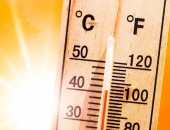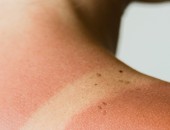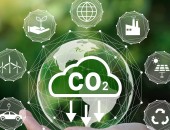Effects of climate change on safety and health at work and in educational institutions
Why is the German Social Accident Insurance addressing the challenges of climate change?
Climate change is leading to an increase in extreme weather events such as heat, droughts, flooding and other natural disasters. These consequences of climate change in particular have long been felt first-hand by many people in Germany. Progressive climate change is having an increasing impact on society, companies and institutions, and therefore also on health and safety at work and in educational establishments.
International conference of the G7 occupational safety and health institutions "Climate change and occupational safety and health"
Health and safety under changing climatic conditions is a pressing issue that was included in the G7 agenda for the first time in 2022. One milestone was the international conference of the G7 occupational safety and health institutions on the topic of "Climate change and occupational safety and health" in Dresden in autumn 2022, which was attended by 15 nations. In cooperation with the German Social Accident Insurance (DGUV) and the Federal Institute for Occupational Safety and Health (BAuA), over 100 experts from the fields of occupational safety and health and science discussed topics such as heat stress, solar UV radiation, extreme weather, the spread of infectious and allergic diseases, the psychological effects of climate change as well as decarbonisation, the circular economy and alternative energies in four symposia.
"Climate change is happening now, not in the distant future. Occupational health and safety must therefore help to ensure healthy and safe work, even under the conditions of climate change. As the German social accident insurance, we want to support companies in this task. For example, we contribute scientific findings from our research institutes and specialist departments in order to counteract the changes that are occurring." Dr Stefan Hussy, Director General of DGUV
Taking into account the national climate protection targets, it is necessary to take effective prevention measures that adapt to the changing climatic conditions.
Situation in companies and institutions
In 2022, the DGUV conducted a representative survey in which over 1,000 employees from more than 20 branches of industry were asked about the impact of climate change on safety and health at work. Around a third stated that their company had already addressed the consequences of climate change for safe and healthy working. Just under a quarter said they had not, while 44 per cent were undecided. Managers appear to be more aware of the risks posed by climate change. Around 43 per cent were of the opinion that climate change has had an impact on jobs and activities in their companies in recent years and that their companies have already dealt with the consequences for safe and healthy working.
Perception of risks
The survey results for the question: "In your opinion, what risks due to climate change need to be addressed so that safe and healthy working is still possible?" can be seen in the following figure. The survey size was N=1,039 (multiple answers possible).
Working in the heat was named as the most important field of action. Around 62.2 per cent of respondents saw a need for action in the event of heat indoors and 49.3 per cent perceived heat when working outdoors as a risk to the health and safety of employees. 44 per cent also expect climate change to pose risks to mental health and 38.5 per cent saw UV radiation as a significant risk when working outdoors. Around a third (33.8 per cent) cited pathogens and 31.1 per cent cited the risk of accidents due to hazardous substances. Allergies were cited least frequently at 24.6 per cent and risks from new technologies at 17.5 per cent.
When assessing and adapting working conditions, the relevant risks must be identified and suitable protective measures implemented. They must also be taken into account when instructing employees.

- Heat and drought
- Heat in indoor workplaces - prevention measures According to the technical rules for workplaces on room temperature (ASR A3.5), the air temperature in workrooms should not exceed +26 °C. If this temperature is exceeded as a result of solar ...

- UV radiation
- UV radiation harbours health risks, even without visible sunburn. Company management is responsible for health and safety, including protection from sunlight. With UV exposure increasing due to climate change, early protective measures are required.

- Decarbonisation and the circular economy
- The necessary expansion of renewable energy is accompanied by far-reaching changes in terms of health and safety. The same applies to the circular economy in the face of dwindling resources. Not only are new areas of work emerging, but preventive occupational safety is also evolving.

- Effects on the psyche and health
- What effects can climatic changes have on mental health? What challenges and health risks are associated with the effects of climate change? The German Social Accident Insurance is monitoring these developments and compiling the latest findings in order to take occupational health and safety into account in this area too.

- Biological pathogens and allergens
- Global warming is leading to longer flowering periods for native plants. This increases the likelihood of allergic symptoms. Higher temperatures also encourage the spread of pathogens. The German social accident insurance is monitoring how occupational health and safety needs to be organised in order to counteract the new challenges.
Events

Networking event of the G7 OSH institutions – Climate Change meets Occupational Safety and Health: 17.October 2022, IAG Dresden, more Information


